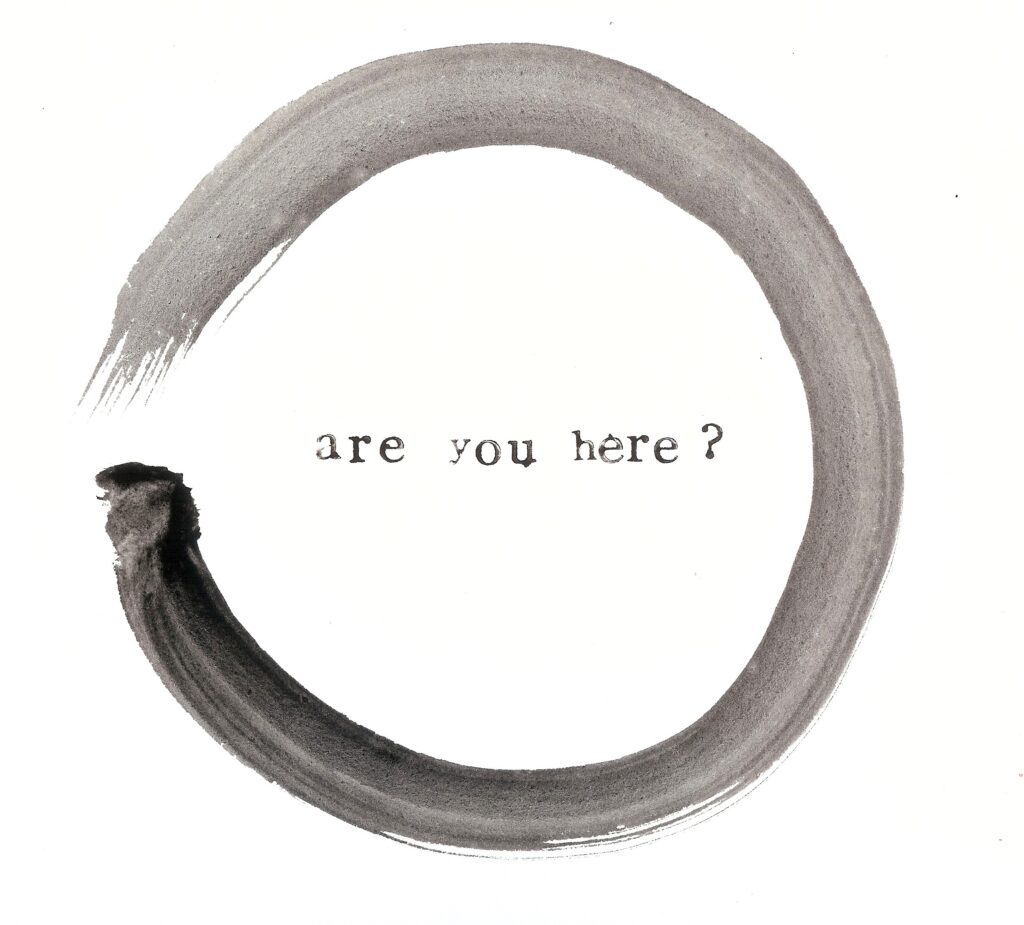
Are you here? Are you here? According to the Stanford Encyclopedia of Philosophy there are roughly 1,700 formal koans. Books like The Gateless Gate and The Sound of One Hand are excellent collections of formal koans and offer a wonderful starting point if you are looking to delve deeper into classical koan practice.
But koan practice is as much a living art form as it is ancient poetry. According to Lion’s Roar, koan practice is a living practice: “koans have always been with us, and always are. They arise naturally in life and out of the dilemmas we face.” There are formal koans and then there are those koans that “arise spontaneously from our traumatic experiences” or from experience itself. The Stanford Encyclopedia of Philosophy continues, “Zen insists that the Zen practitioner plant his feet in the everydayness of ‘here and now.’” The question that follows is this: “how far wide is ‘here’ and how long ‘now’”?
Lately, I’ve been taking more time to pause and settle into the present moment, time to make my mind more expansive, time to settle into peace. Sometimes the practice of being present presents itself as a challenge. It is difficult to sit still in meditation, difficult to try to paint an enso (or circle) in one fluid movement, difficult to listen to the still voice within and transcribe its words without rational judgement.
Matsuo Basho wrote: “Every day is a journey and the journey itself is home.” Home is right here, wherever I am, neither the future nor the past.
Sometimes it is important to take a break and settle into the present moment, without expectations, without striving, without planning. It’s okay to have goals and to want to achieve things, but in our goal-oriented, achievement-obsessed culture, it is also important to take a step back and settle in to how things are right now.
Happiness requires a commitment to the present. According to Brad Stulberg, in his book, The Practice of Groundedness, “Researchers from Harvard found that when people are fully present for their activities, they are much happier, and more fulfilled than when they’re thinking about something else.” The researchers explained: “A wandering mind is an unhappy mind.” Stulberg explains: “When we protect our time, energy, and attention and direct it wisely–when we are present for meaningful people, places, and pursuits–our entire experience of being alive improves dramatically.”
So, this week, I put away the phone, painted circles, and listened to what my inner voice had to say. It asked me to pause, and I paused. Perhaps the best definition of love is this: love is where we place our attention. And so, perhaps the beginning of wisdom is this–to pay attention to what we pay attention to on a daily basis. To pause this moment and ask what consumes me and what am I consuming? Is it aligned with my deepest values? Is it aligned with love?
In his book Be Here Now, Ram Dass argues that the greatest mystical experinces of all require commitment to the present moment.
Brad Stulberg writes that when we are present, we enter a sacred space. Presence is a “day-to-day decision. How do I want to show up? Where do I want to direct my energy and attention? What do I want to be present for?”
Now is perhaps the greatest koan of all. No one can tell you the answer, but the answer is right there.
The Gateless Gate: The Classic Book of Zen Koans at Amazon.com
About the Writer
Janice Greenwood is a writer, surfer, and poet. She holds an M.F.A. in poetry and creative writing from Columbia University.
